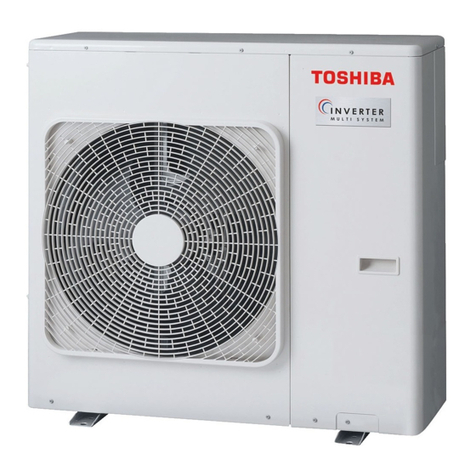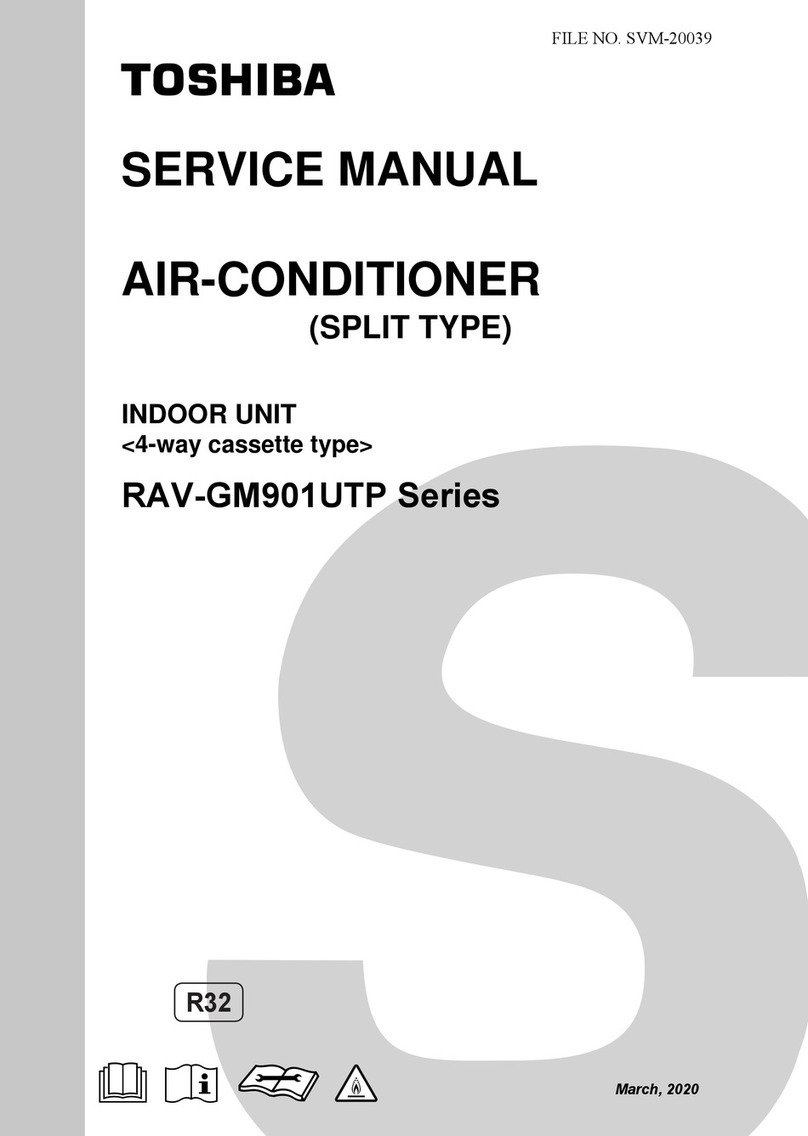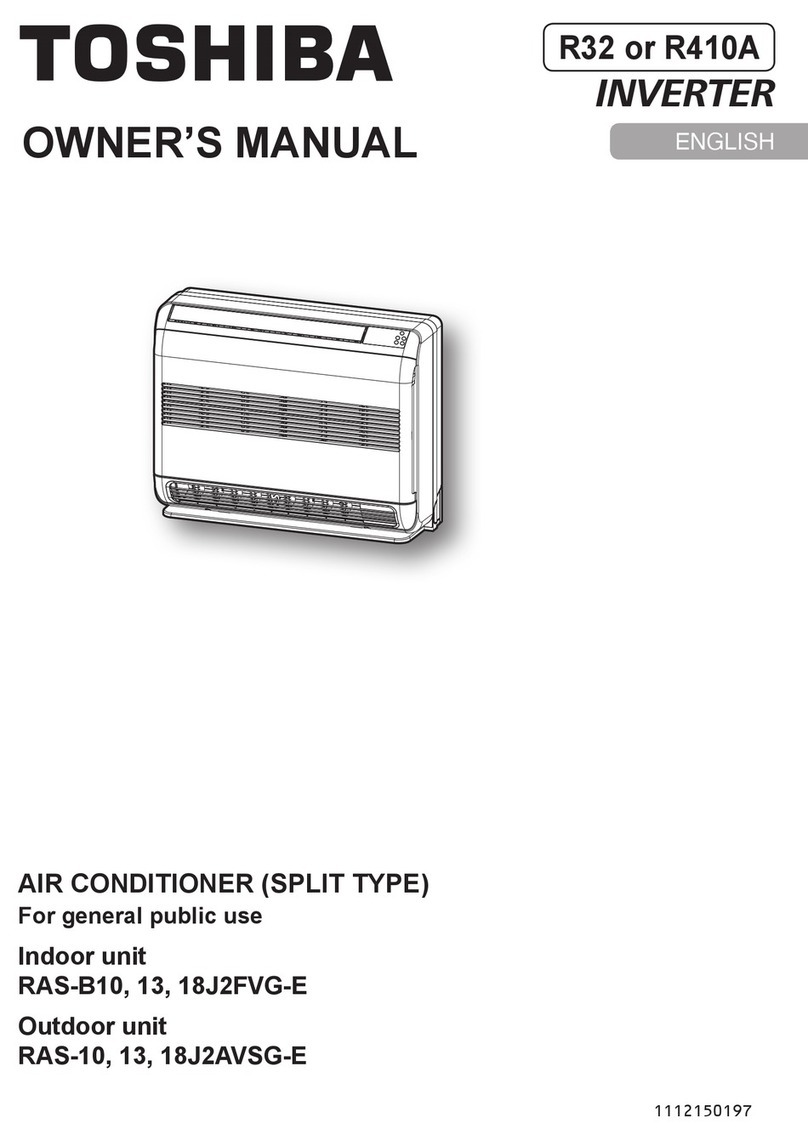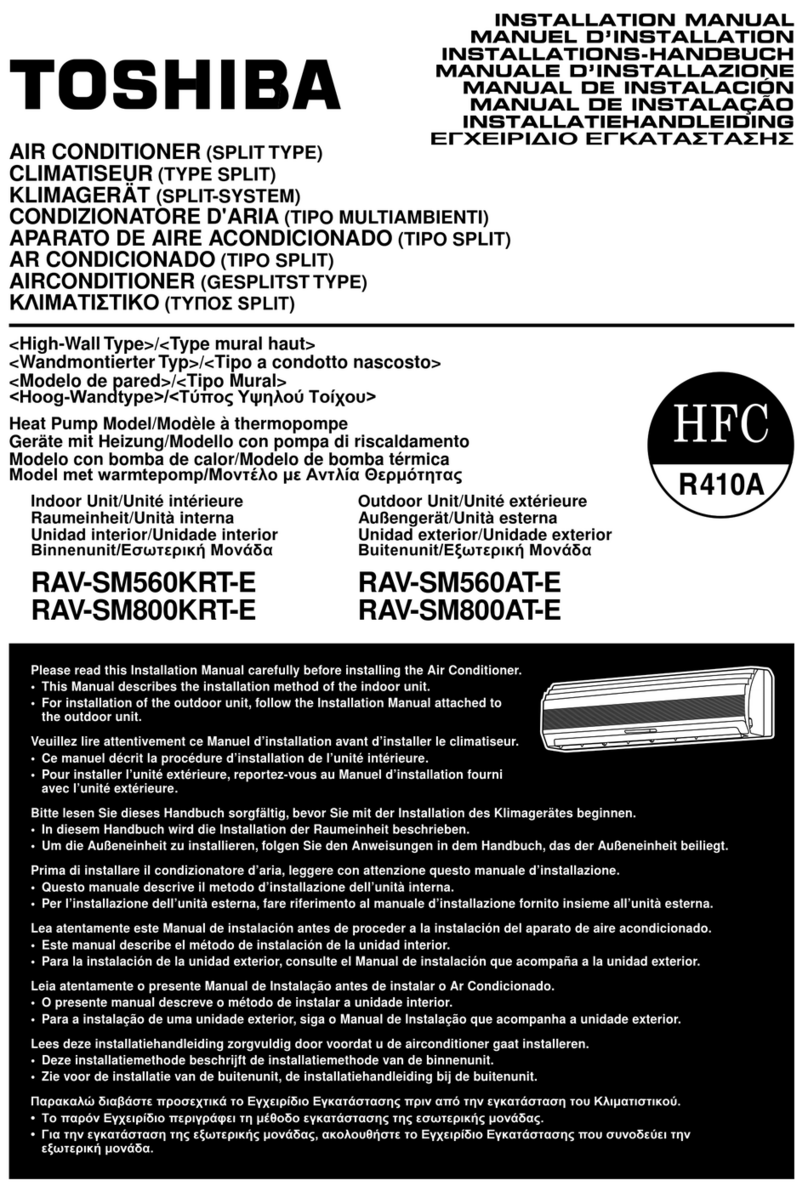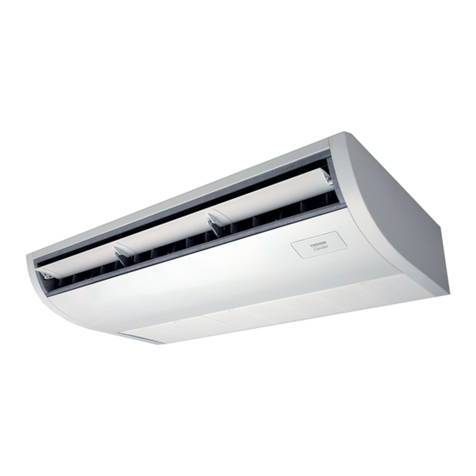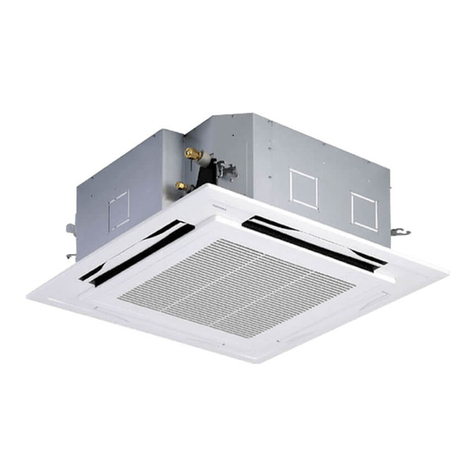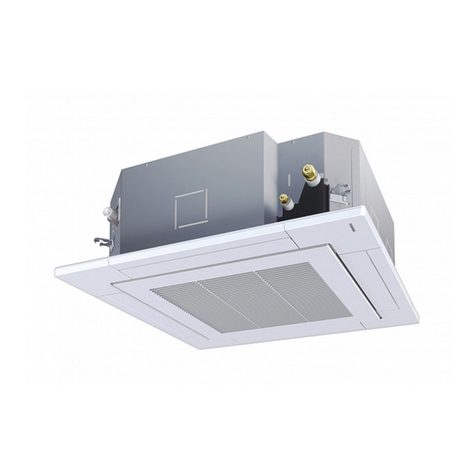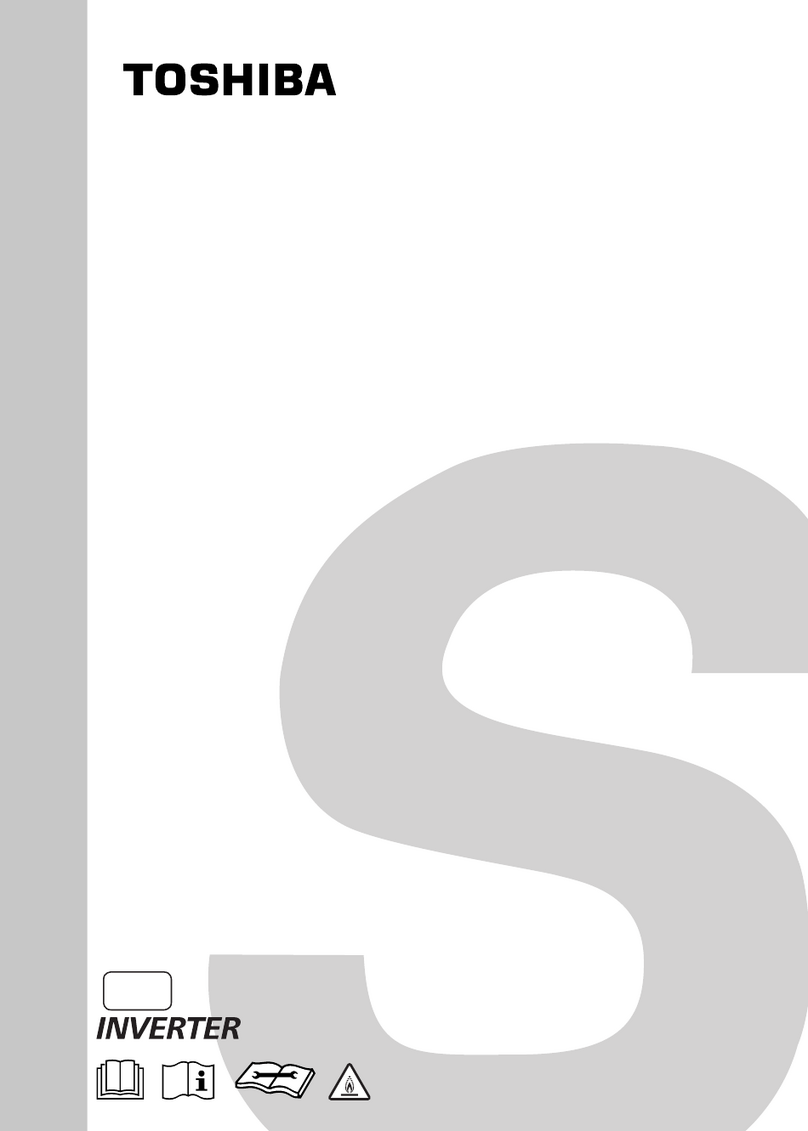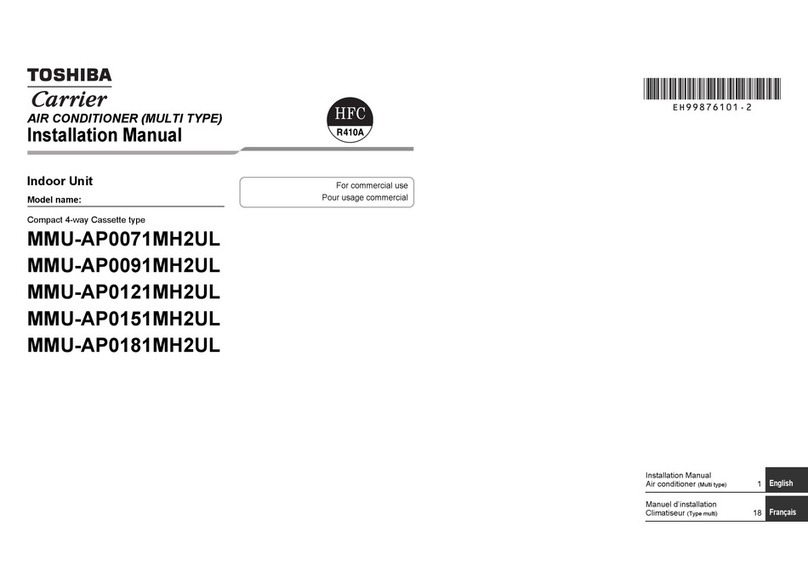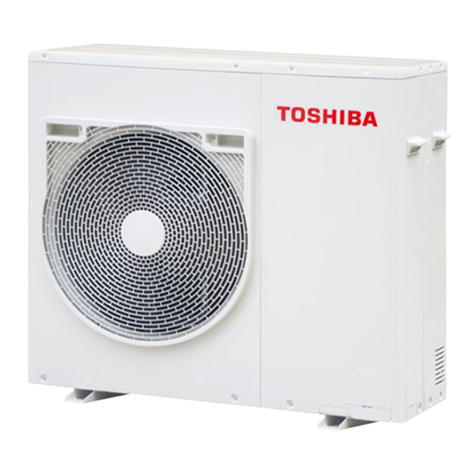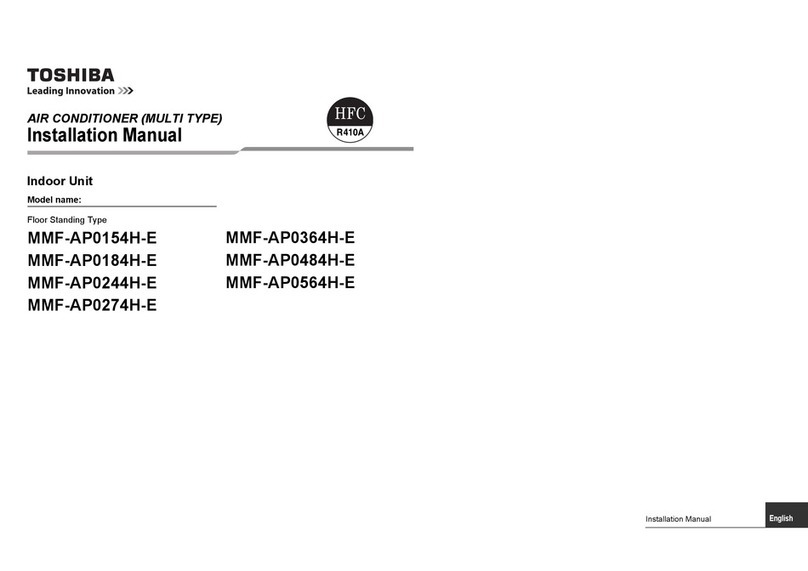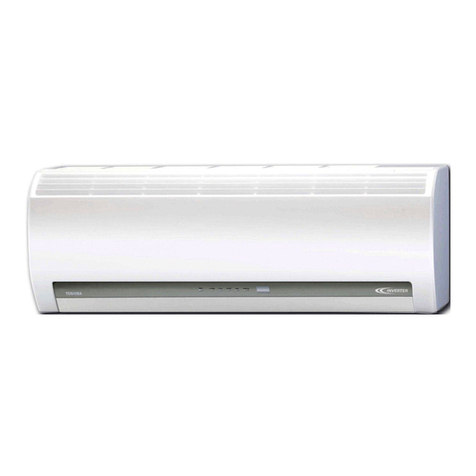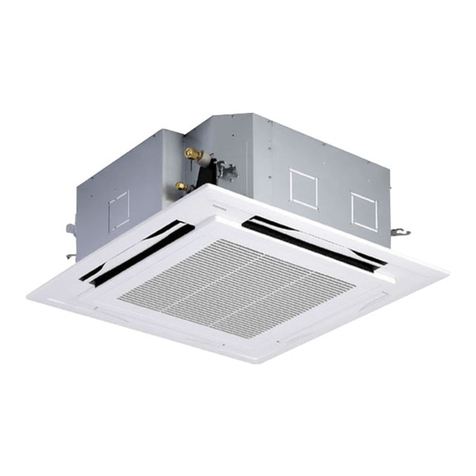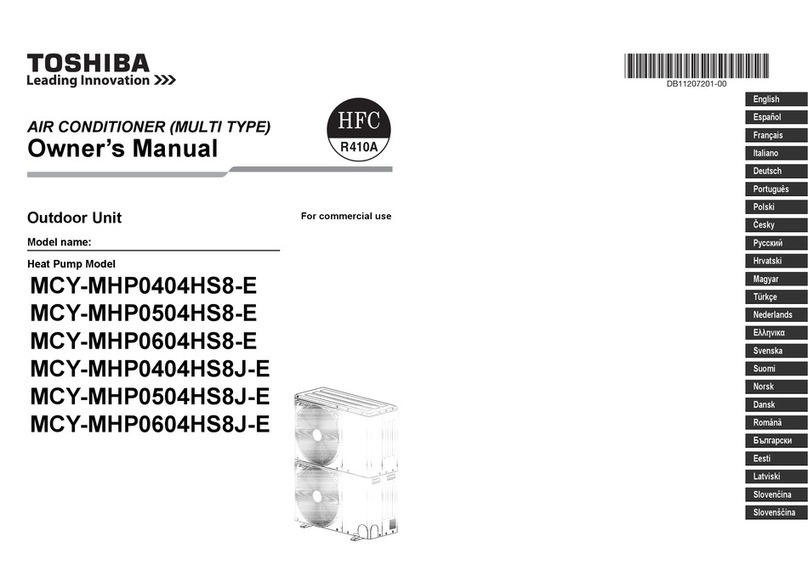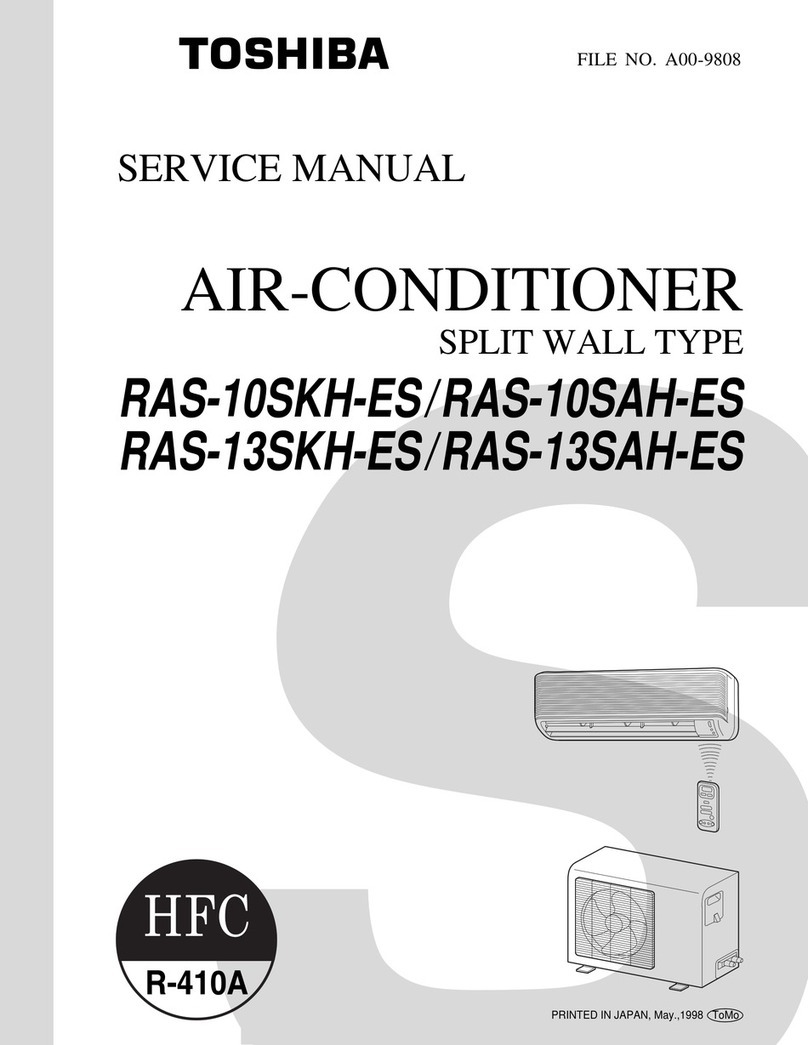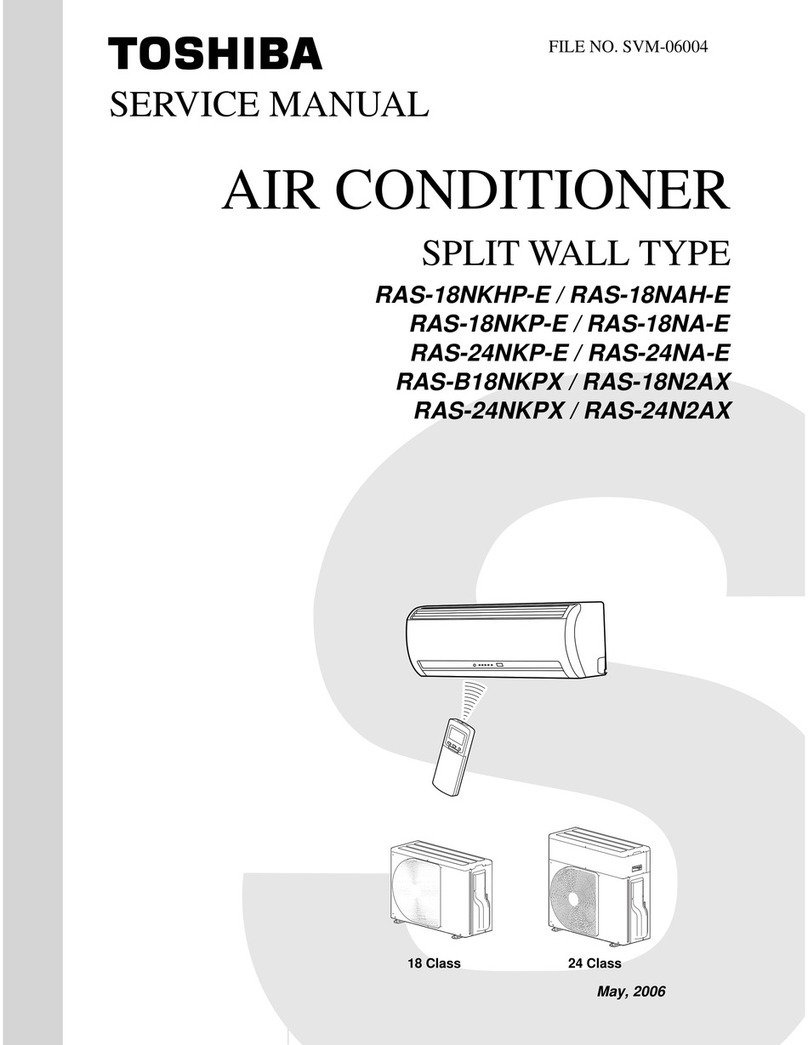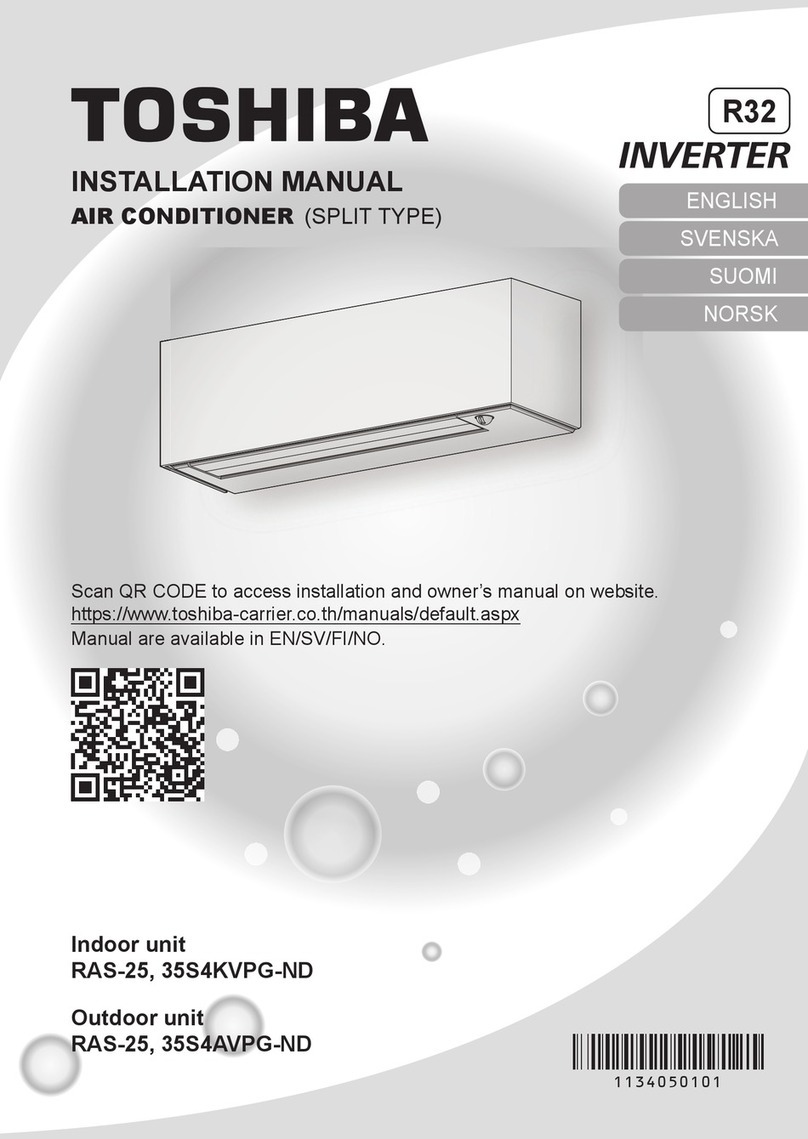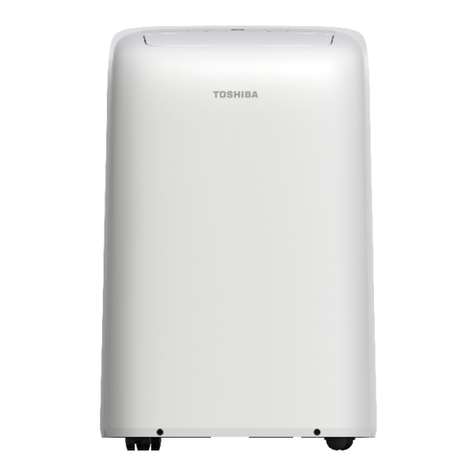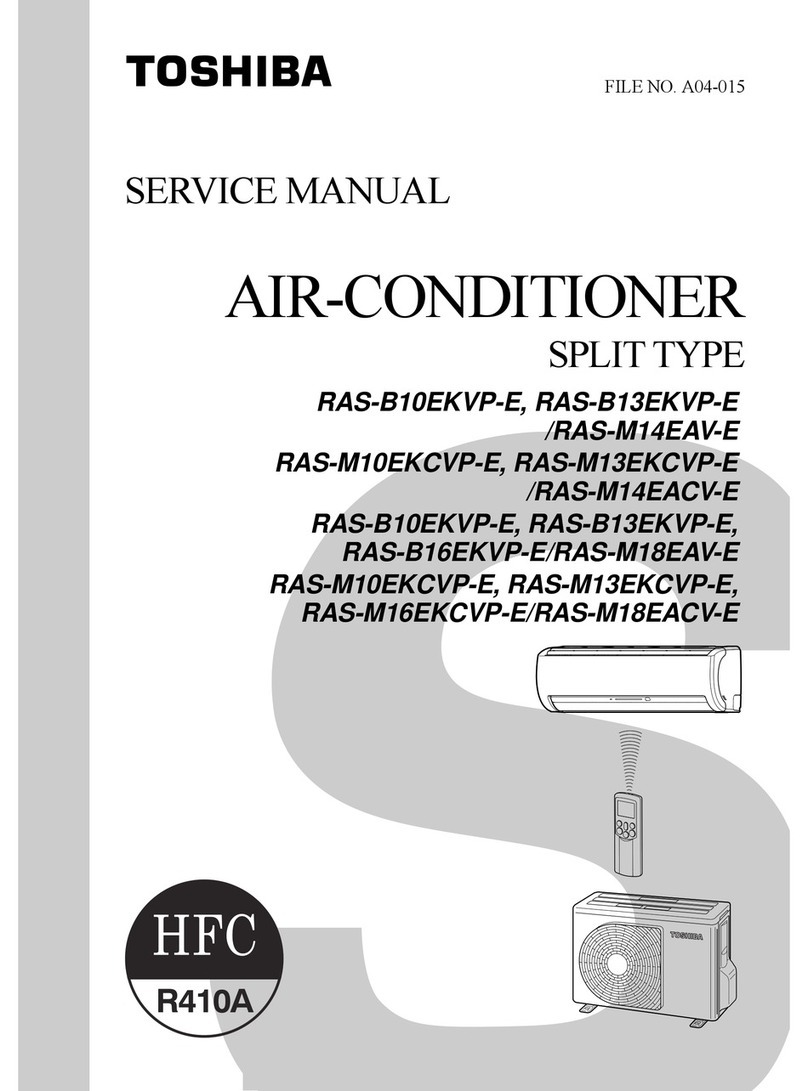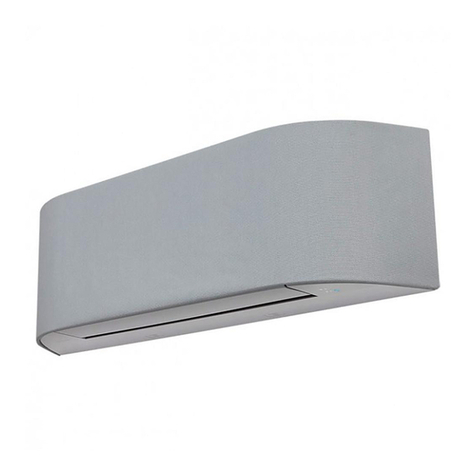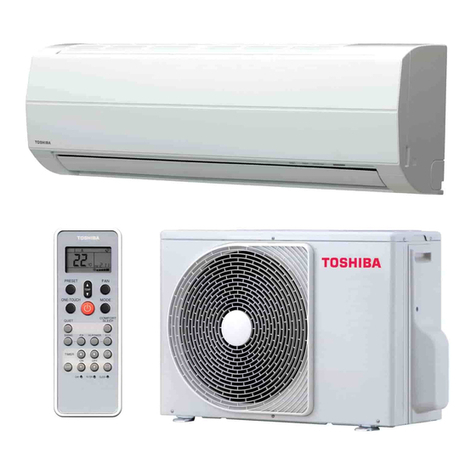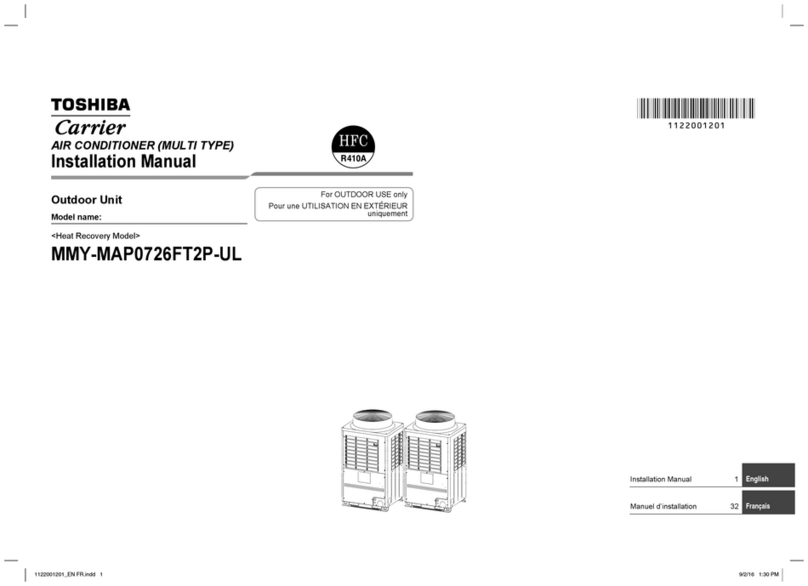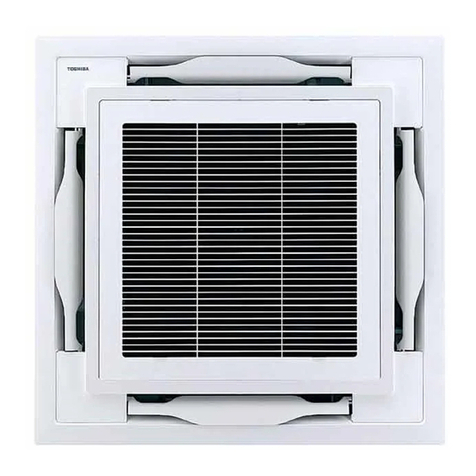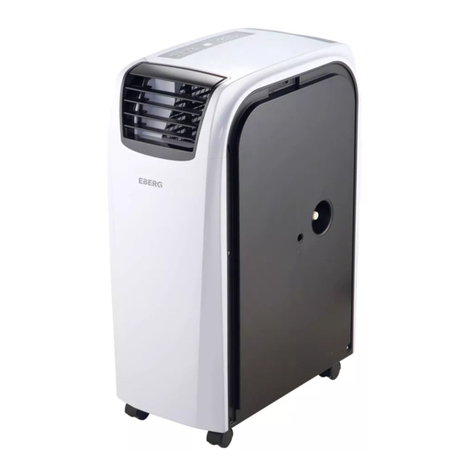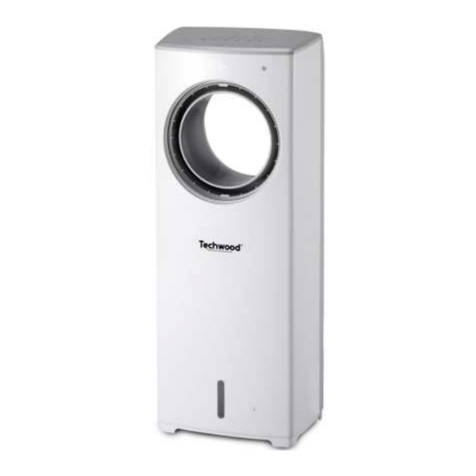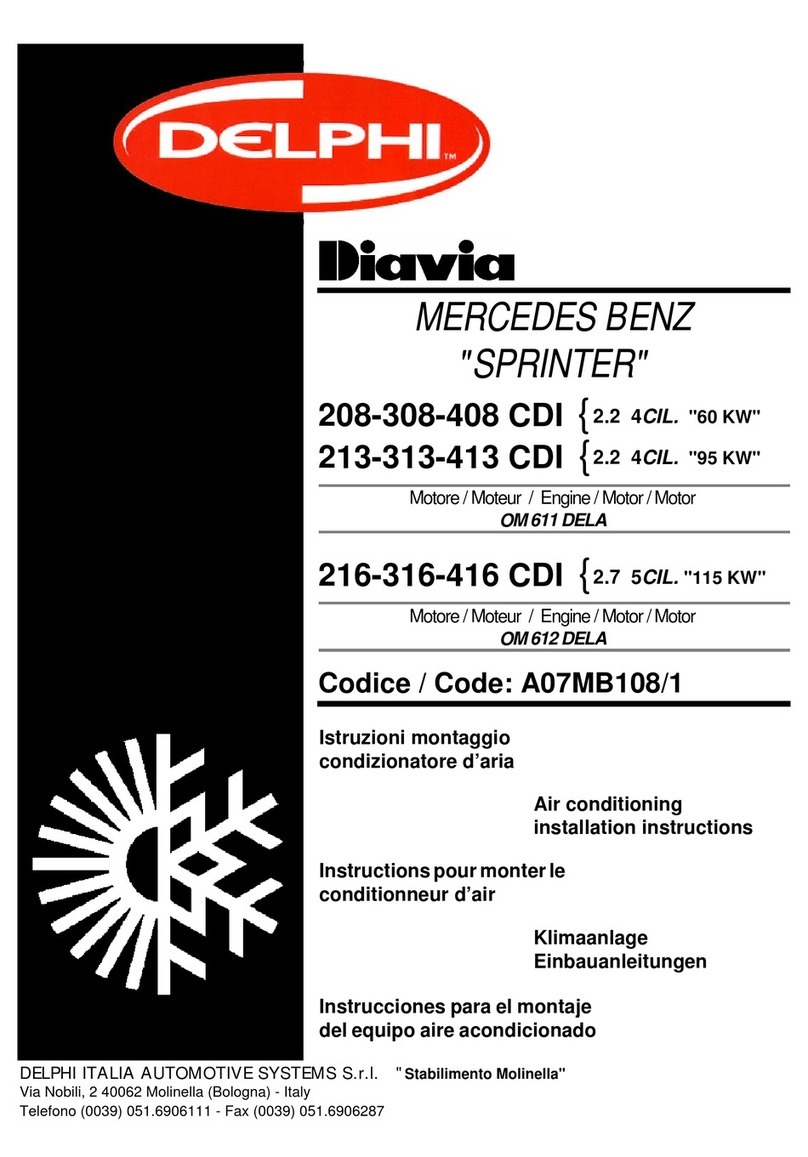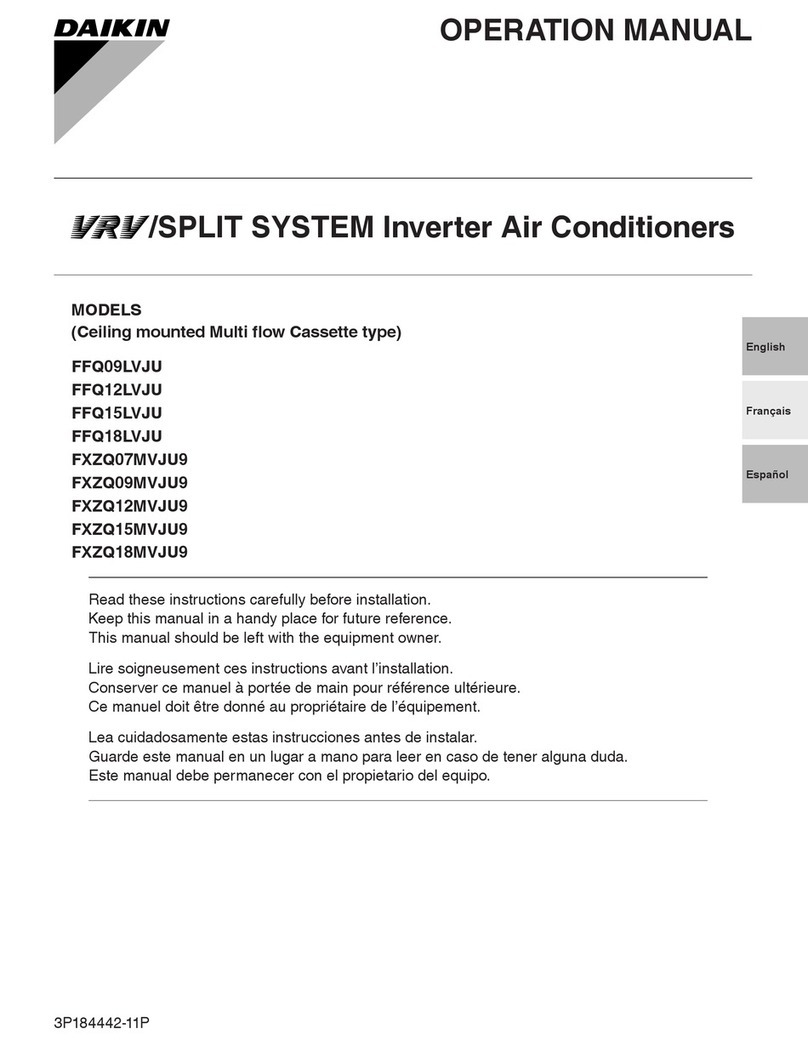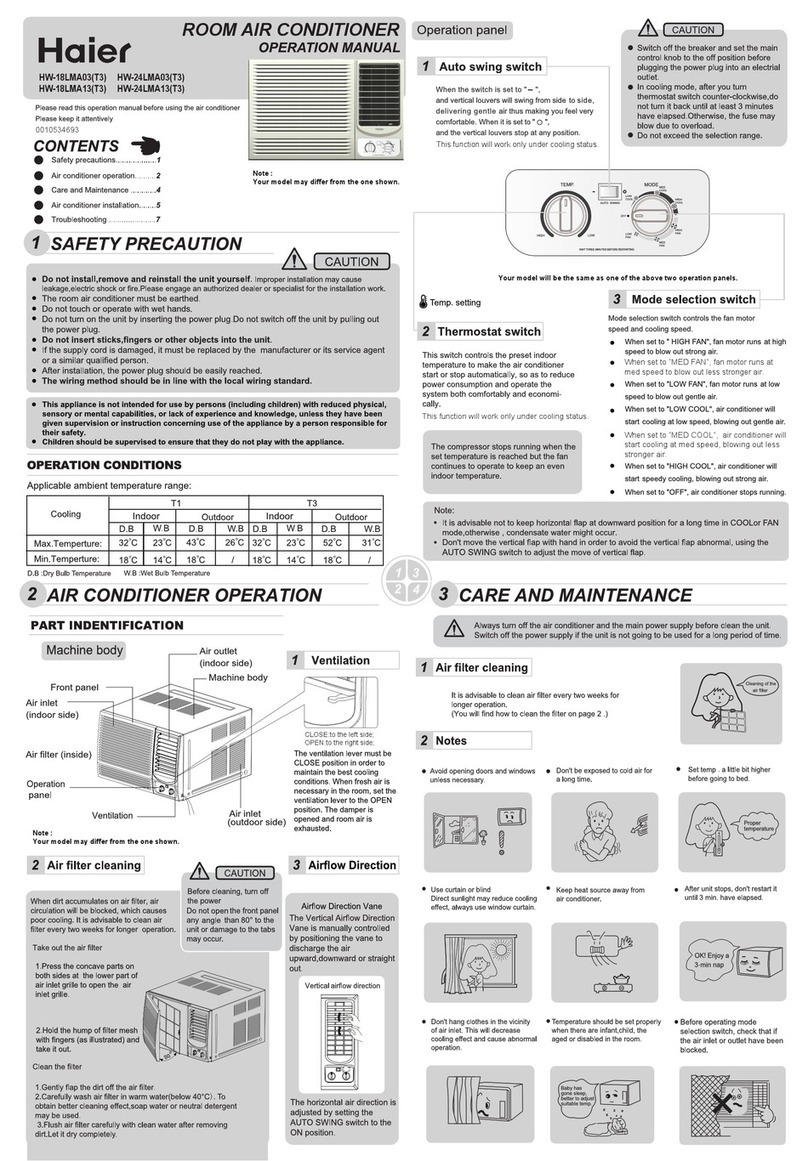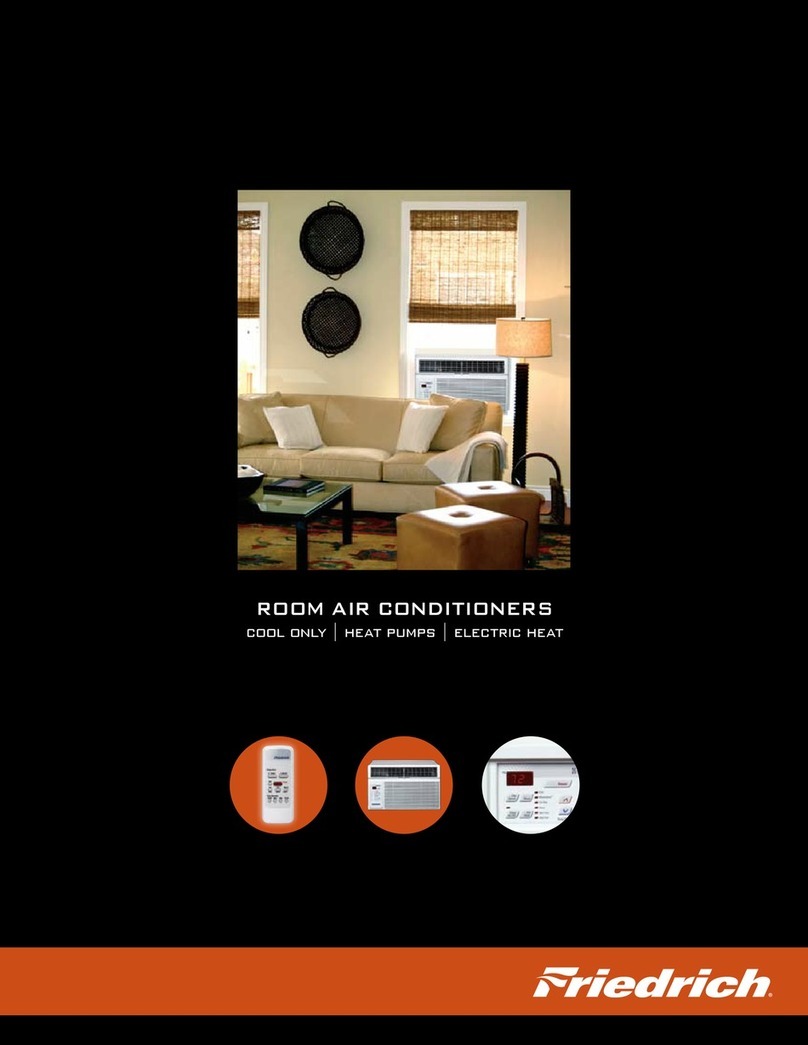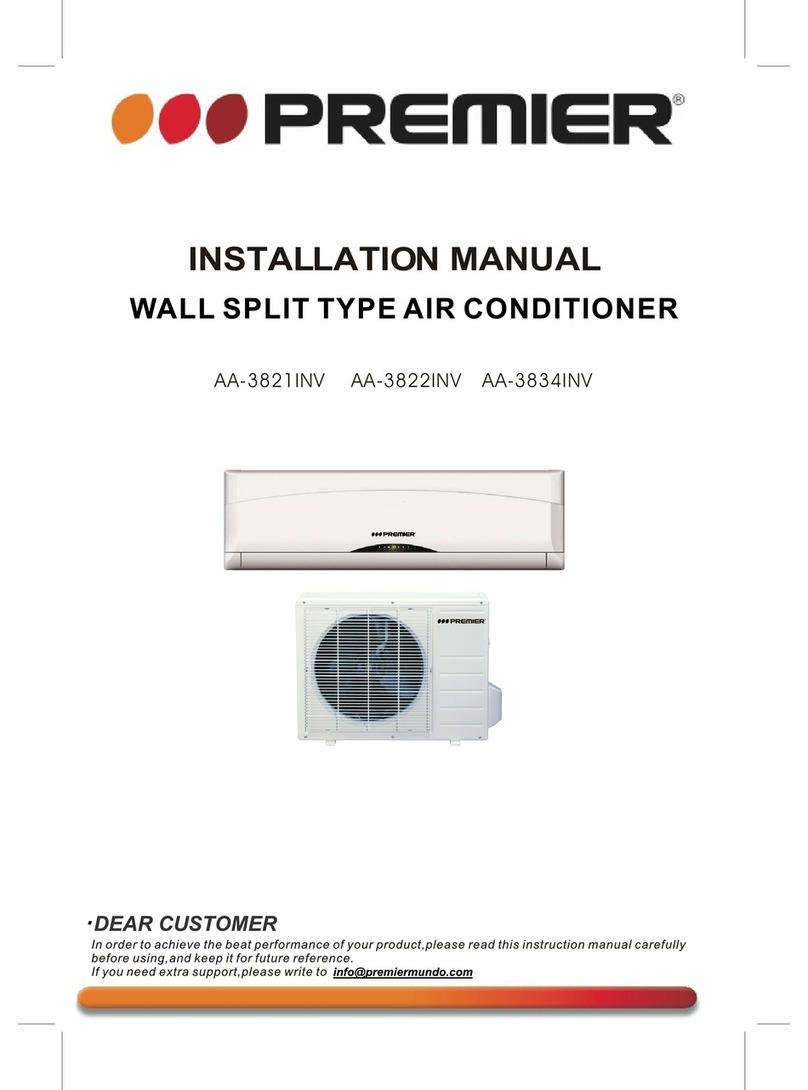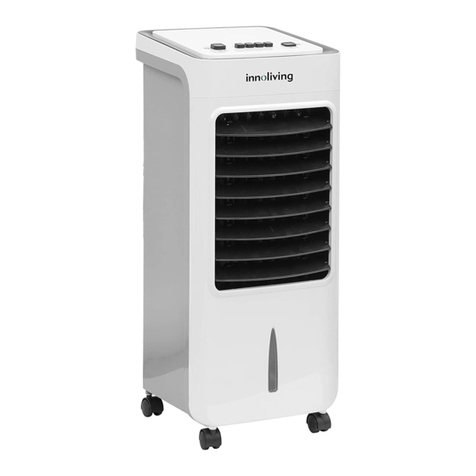7
Do not bring a
child close to the
equipment.
If, in the course of carrying out repairs, it becomes absolutely necessary to check out the electrical parts with the
electrical control cover of one or more of the Air to Air Heat Exchanger removed in order to find out exactly where
the trouble lies, put a sign in place so that no-one will approach the work location before proceeding with the work.
Third-party individuals may enter the work site and receive electric shocks if this warning is not heeded.
Insulating
measures
Connect the cut-off lead wires with crimp contact, etc., put the closed end side upward and then apply a water-cut
method, otherwise a leak or production of fire is caused at the users’ side.
Assembly/
Wiring
After repair work, surely assemble the disassembled parts, and connect and lead the removed wires as before.
Perform the work so that the electrical control cover does not catch the inner wires.
If incorrect assembly or incorrect wire connection was done, a disaster such as a leak or fire is caused at user’s
side.
Insulator check
After the work has finished, be sure to use an insulation tester set (500V Megger) to check the resistance is 1M:
or more between the charge section and the non-charge metal section (Earth position).
If the resistance value is low, a disaster such as a leak or electric shock is caused at user’s side.
Check after
repair
Once the repair work has been completed, check for the insulation resistance.
Then perform a trial run to check that the Air to Air Heat Exchanger is running properly.
After repair work has finished, check there is no trouble. If check is not executed, a fire, electric shock or injury may
be caused. For a check, turn off the power breaker.
After repair work (installation of electrical control cover and inspection cover) has finished, execute a test run to
check there is no generation of smoke or abnormal sound.
If check is not executed, a fire or an electric shock is caused. Before test run, install the electrical control cover and
inspection cover.
Be sure to fix the screws back which have been removed for installation or other purposes.
Check after
reinstallation
Only a qualified installer (*1) or qualified service person (*1) is allowed to relocate the Air to Air Heat Exchanger. It
is dangerous for the Air to Air Heat Exchanger to be relocated by an unqualified individual since a fire, electric
shocks, injury, water leakage, noise and/or vibration may result.
Check the following items after reinstallation.
1) The earth wire is correctly connected.
2) The power cord is not caught in the product.
3) There is no inclination or unsteadiness and the installation is stable.
If check is not executed, a fire, an electric shock or an injury is caused.
Installation
Only a qualified installer (*1) or qualified service person (*1) is allowed to install the Air to Air Heat Exchanger. If
the Air to Air Heat Exchanger is installed by an unqualified individual, a fire, electric shocks, injury, water leakage,
noise and/or vibration may result.
Before starting to install the Air to Air Heat Exchanger, read carefully through the Installation Manual, and follow its
instructions to install the Air to Air Heat Exchanger.
Be sure to use the company-specified products for the separately purchased parts. Use of non-specified products
may result in fire, electric shock, water leakage or other failure. Have the installation performed by a qualified
installer.
Do not supply power from the power terminal block equipped on the outdoor unit to another outdoor unit. Capacity
overflow may occur on the terminal block and may result in fire.
Do not install the Air to Air Heat Exchanger in a location that may be subject to a risk of expire to a combustible gas.
If a combustible gas leaks and becomes concentrated around the unit, a fire may occur.
Install the Air to Air Heat Exchanger at least 2.5 m above the floor level since otherwise the users may injure
themselves or receive electric shocks if they poke their fingers or other objects into the Air to Air Heat Exchanger
while the it is running.
Install a circuit breaker that meets the specifications in the installation manual and the stipulations in the local
regulations and laws.
Install the circuit breaker where it can be easily accessed by agent.
When installing a circuit breaker outdoors, install one which is designed to be used outdoors.
Do not place any combustion appliance in a place where it is directly exposed to the wind of Air to Air Heat
Exchanger, otherwise it may cause imperfect combustion.





















